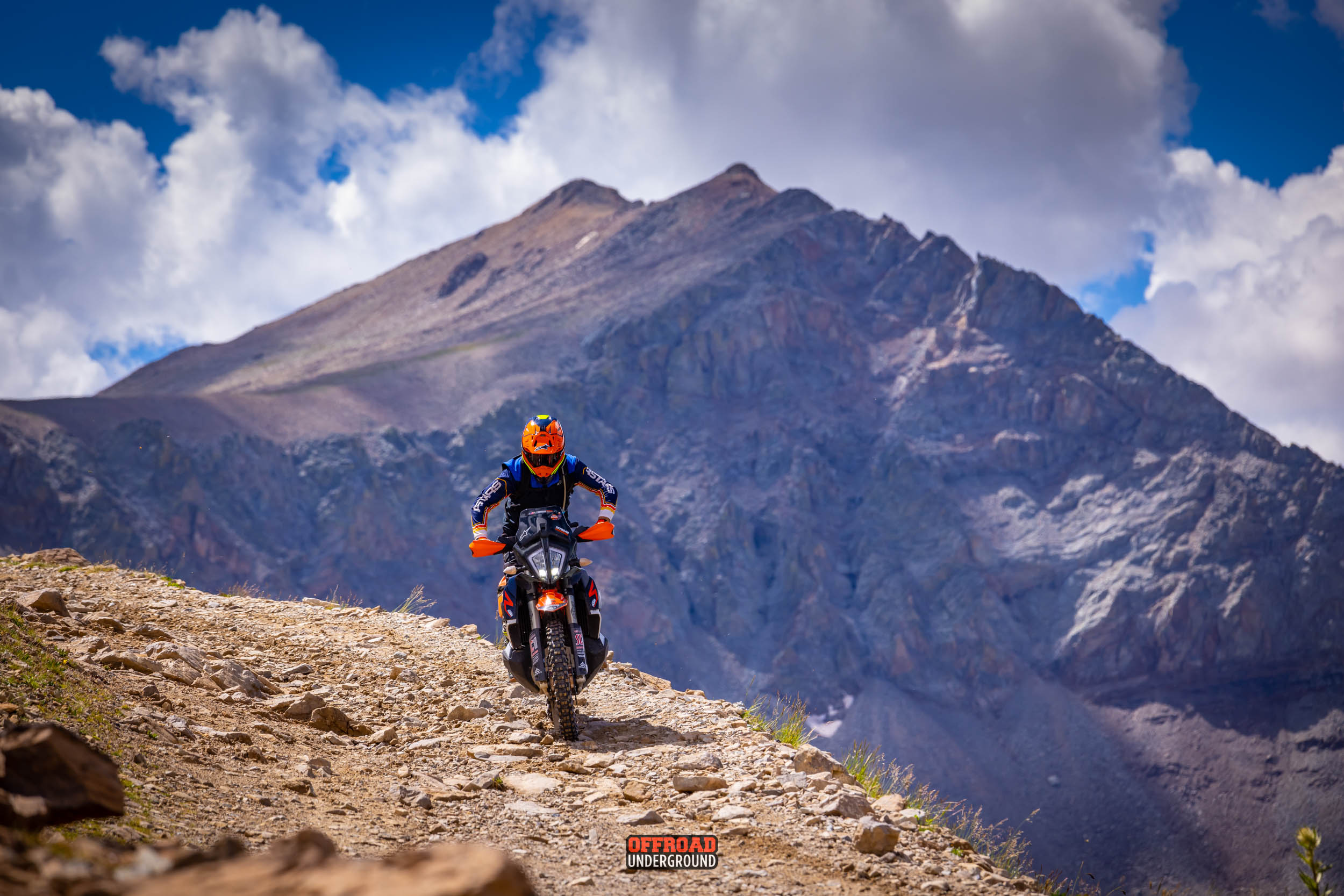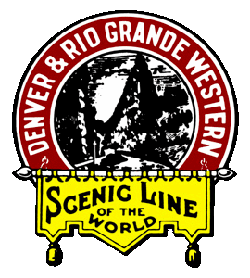
Brief Railroad History of Salida and Chaffee County & the Denver & Rio Grande Railroad


Quick Facts about Salida & Colorado
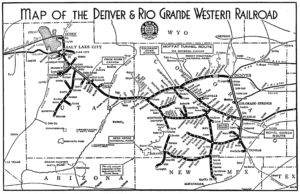
Salida is the county seat of Chaffee County and its largest city, with a population of 5,600 in 2010.
- The city is the service, supply, and tourism center for the Upper Arkansas River Valley.
- The Denver and Rio Grande Railroad bypassed the existing settlement of Cleora to establish Salida in 1880.
- The railroad line along the north / east side of the Arkansas River was established in the late 1870’s and operated steadily through the 1970’s as a freight hauler and passenger rail.
- Salida became a major division point for the D&RG, which erected extensive railroad facilities north of the commercial district on the opposite bank of the Arkansas River.
- The city developed quickly and became the hub of a prosperous mining and agricultural region within a decade of its founding.
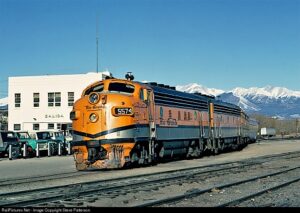
Salida Depot in the 1960s
- Railroad activity began to decline in the 1950s and, in 1971, Salida ceased to be a division point for the D&RG.
- The line, which connects Pueblo on the east and Grand Junction on the west, is known as the Tennessee Pass line, and is one of a few rail routes over the Continental Divide.

Railroad History of Buena Vista, Colorado
Buena Vista was once the rail head of three major railroads.
- In 1880, the narrow gauge Denver South Park and Pacific line arrived down Trout Creek Pass, headed for St. Elmo and Gunnison country.
- Later that year, the Denver and Rio Grande built its way through the Royal Gorge, up the Arkansas River canyon and into Buena Vista.
- Last to arrive in Leadville from Colorado Springs was the Colorado Midland also down Trout Creek Pass.
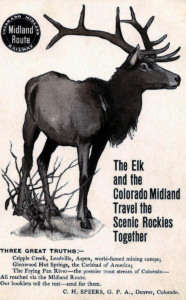
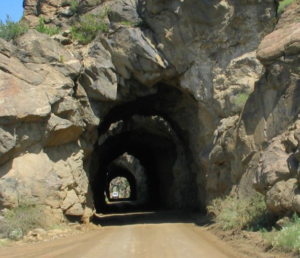
The Midland, as it was known, had its depot on Midland Hill and passengers and freight had to be hauled down into Buena Vista.
- The Midland ran north of town through the settlement of Wildhorse and the 4 Mile tunnels.
- The Midland line was shut down in May of 1922.


The Denver, South Park and Pacific, (DSP &P) later known as the South Park, built the highest railroad tunnel in the world at that time.
- The Alpine tunnel was located above St. Elmo through the divide to Pitkin.
- The tunnel was drilled in 1880-81 and was 1,771 feet long.
- The South Park ran its last passenger train from Denver to Buena Vista in 1910.
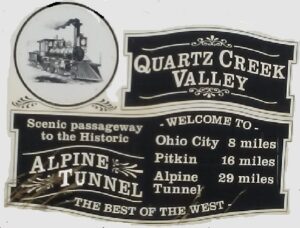
The Denver and Rio Grande merged with Southern Pacific in 1988, and then merged with the Union Pacific in 1996.
When Union Pacific acquired the line, it announced plans to abandon the route which runs through Buena Vista, with the elimination of Tennessee Pass and the touted cost savings.

Tennessee Pass Route
D&RG / D&RGW Tennessee Pass Route History
- Tennessee Pass Route Facts
- From: Pueblo, CO
- To: Glenwood Springs, CO
- Miles: 245
- Built: 1880-1887 (Narrow Gauge)
- 3rd rail added: 1890 (Salida-Malta)
- To Standard Gauge: 1890/1911
The first part of the line from Salida, CO, up to Malta (near Leadville) was constructed as part of the narrow gauge extension of the Royal Gorge Route route in 1880.
- The next year, 1881, was more of the same. The branch from Malta to Cranes Park was extended over the Divide at Tennessee Pass, and then down the Eagle River valley/canyon to Red Cliff to serve a new pocket of silver mining.
- 1882 brought two more miles from Red Cliff to Rock Creek.
- Aside from more spurs around Leadville, the line over Tennessee Pass essentially stayed the same until 1887.
- By late 1886, a new silver boom was starting near Aspen, CO.
- The race was on between the Colorado Midland and the Denver & Rio Grande to see which railroad would tap the new mines of Aspen first.
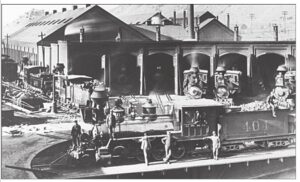
The D&RG completed all 104 miles of the new narrow gauge line west from Red Cliff, through Glenwood Canyon to Glenwood Springs, CO, and then back up the Roaring Fork to Aspen (the Aspen Branch) by the end of 1887, handily beating the Colorado Midland.
- As part of the Rio Grande’s massive efforts between 1888 and 1890 to construct a standard gauge mainline across the mountains, the Tennessee Pass route became the obvious choice.
- Most of the route was suitable to direct conversion – meaning curvature and gradient was well in line with standard gauge practices.
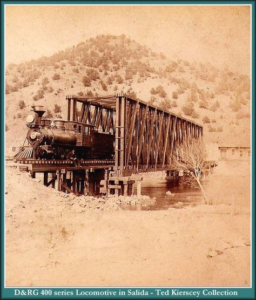
In 1889-1890, the second Tennessee Pass tunnel was bored under the Divide, 200 feet lower than the original crossing.
- Initially, narrow gauge rails were run through it until the rest of the route was ready for standard-gauging.
- By late 1890, the section from Salida to Malta had been converted to dual gauge track.
- In 1945, a new, larger Tennessee Pass tunnel was constructed, replacing the original tunnel constructed in 1890.
- The new tunnel was just geographically west of the original tunnel.
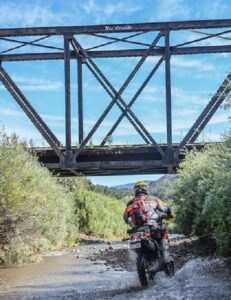
The Tennessee Pass was a tough, and therefore costly, railroad to operate.
With 3%+ grades on the west side and frequently heavy snowfall, Tennessee Pass was inferior to the ex-D&SL Moffat Route crossing via the Moffat Tunnel.
- However, the saving grace of Tennessee Pass would be the Pueblo gateway onto the Missouri Pacific.
- With booming demand for Colorado’s cleaner coal in the 1970s and 1980s thanks to the Clean Air Act and the oil embargo, it only made sense to send the product over the Tennessee Pass and directly to Pueblo for interchange with the Missouri Pacific.
- Rather than going via the Moffat Route and then down the Joint Line.
- However, many, including 1980s Rio Grand President W.J. Holtman, argued that having two mainline crossings of the Divide was more than the Rio Grande could really afford.
- 1987 was the first time the powers that be attempted to shut down Tennessee Pass.
- Having successfully routed nearly all traffic via the Moffat (which pushed the Moffat Tunnel to near capacity), only two trains per day were left going over Tennessee.
- The experiment would be short-lived, however.
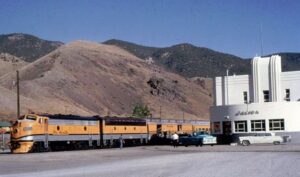
Philip Anschutz and Rio Grande Industries purchased Southern Pacific in 1988.
Wanting to capitalize on the new, shorter, combined D&RGW-SP Central Corridor route from California’s Bay Area to points east, the additional traffic would be more than the Moffat could handle.
- In addition, some of the tunnels on the Front Range were known to have clearance issues with double-stacked containers.
- So, a furious effort was made to not only reactivate Tennessee Pass, but bring it in line with modern mainline standards – heavier rail, new ties and ballast, and working on a few problem tunnels to improve clearance.
- By the end of 1988, the line was officially back from the threshold of death.
- In only about eight years, the line went from two trains per day between Minturn and the summit to as many as 30.
- Despite traffic having been built up to this level, the beginning of a very quick end was less than a year away.
- On Sept.11, 1996, Southern Pacific and Union Pacific merged in order to survive the recently created super-competitor, BNSF.
- One of the touted cost savings of the merger would be the elimination of Tennessee Pass, since UP planned to route all traffic east out of Denver on an upgraded Kansas Pacific line.
- The UP line east from Pueblo would then also be abandoned as well.
- Only just shy of a year after the UP-SP merger, on 23, Aug.1997 the last revenue train went over Tennessee Pass.
Today, only the very western and eastern ends of the route are still active.
- From Dotsero-Glenwood Springs, CO, the route forms part of the modern Union Pacific main as part of the line from Denver via the Moffat Route and Dotsero Cutoff.
- A local out of Grand Junction runs east beyond Dotsero several times a week to the drywall plant at Gypsum, but that’s as far as any regular train steps onto the former Tennessee Pass line.
- From time to time, UP will store cuts of coal hoppers on the unused stretch between Gypsum and Wolcott, but these moves are irregular at best.
- The Eastern end of the route is the Royal Gorge route, operated by Rock & Rail and the Canon City & Royal Gorge from Canon City.
LINKS TO HISTORICAL RAILROAD INFO around the Crossroads of the Rockies FROM DENVER & RIO GRANDE.NET
You will have the opportunity to ride on or over most of these historical Rail Lines at X-Roads of the Rockies.
Denver & Rio Grande. Net Links
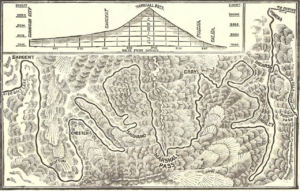

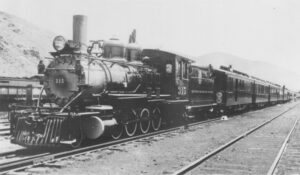
D&RG / D&RGW Royal Gorge Route History
Royal Gorge Route Facts
- From: Pueblo, CO
- To: Salida, CO
- Miles: 94.6
- Built: 1876-80 (Narrow Gauge)
- To 3rd Rail: 1888
- To Standard Gauge: 1911
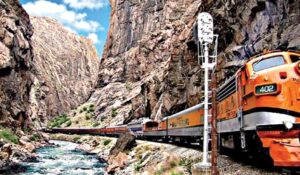
The Royal Gorge Route has, quite possibly, one of strangest histories of the entire Rio Grande system.
The initial part of the route – from Pueblo to Florence and then down the branch to the coal mines (later the Coal Branch) – was constructed as the final part of the narrow gauge Denver-Pueblo Main constructed in 1872.
- This connected the railroad to a source of revenue and fuel, but angered Canon City residents.
- Fremont County residents (primarily Canon City) had approved a $50k bond issue to lure the D&RG to town in 1871, and in the end didn’t get their railroad.
- Two years later in 1873, the railroad asked again, but this time for $100,000.
- This time, despite a narrowly positive referedum, the county commissioners didn’t go for it and didn’t give in to the railroad’s terms.
- Canon City residents, however, decided to go it alone, approving $50k in cash and $50k in land grants in early 1874.
- This time, rather than holding out for more cash, rails were completed into Canon City on July 6th 1874.
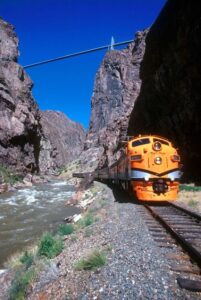
Construction stalled at that point for several years while the Rio Grande pursued routes southward and battled ongoing problems with debt. Eventually, the D&RG found itself leased out to its arch-rival, the AT&SF.
Through a subsidiary – the Pueblo & Arkansas Valley – the AT&SF built westward through the Royal Gorge in 1879 towards the booming lead and silver mining districts around Leadville.
- The Pueblo & Arkansas Valley completed 22 miles of track through the Royal Gorge (known at the time as the Grand Canyon of the Arkansas) from Canon City to Texas Creek – including the famous Hanging Bridge.
- As a condition of the Treaty of Boston, the P&AV track through the gorge was sold to the D&RG in 1880.
- To make the line useful, it was extended another 89 miles from Texas Creek to Malta, at the base of the hill below Leadville.
- Various branches sprouted from that point towards the actual mines near Fremont Pass. (Climax)
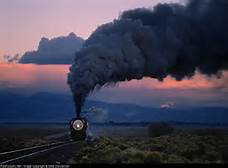
Narrow gauge through the Grand Canyon of the Arkansas (Royal Gorge)
The line remained narrow gauge until 1888, when it became one of the first routes converted to dual gauge.
- Partially this was done to handle the heavy freight coming out of Leadville, but primarily this was done to provide a standard gauge route west in order to compete effectively with the ever-expanding Colorado Midland.
- The dual gauge also lasted longer than it did nearly anywhere else, with the third rail between Salida and Pueblo lasting until 1911.
- Presumably because of the narrow gauge Calumet and Monarch Branches, as well as the narrow gauge mainline over Marshall Pass which lasted until 1952.
Two major route changes have occurred since the line was originally constructed.
The first came with the great Arkansas River flood of 1921.
- The flooding decimated the line, particularly the Canon City to Pueblo segment, requiring nearly the entire stretch to be reconstructed.
- The second occurred with the construction of the Pueblo Reservoir in 1969.
- The dam would impound the waters of the Arkansas from just above Pueblo back to just above Swallows.
- Flooding the original D&RG right of way under more than a hundred feet of water.
- The new route was moved to the north side of the new reservoir, with the old line removed west of the dam in 1969.
- The section east of the dam survived until 1976, as it was used to assist in construction of the dam.
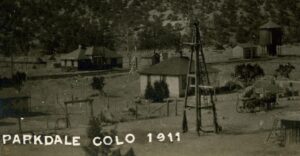
In 1998, the Pueblo-Parkdale section was sold to Rock & Rail and the Canon City & Royal Gorge.
With Union Pacific maintaining trackage rights.
- The Canon City & Royal Gorge runs regular tourist trains through the Royal Gorge.
- Rock & Rail runs rock trains from the Parkdale quarry to Colorado Springs.
- As well as provides switching services for the cement plant at Portland.

